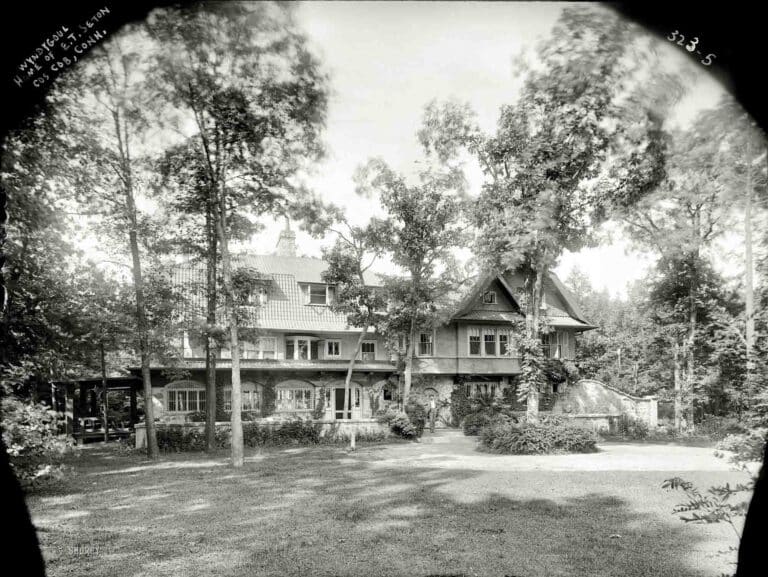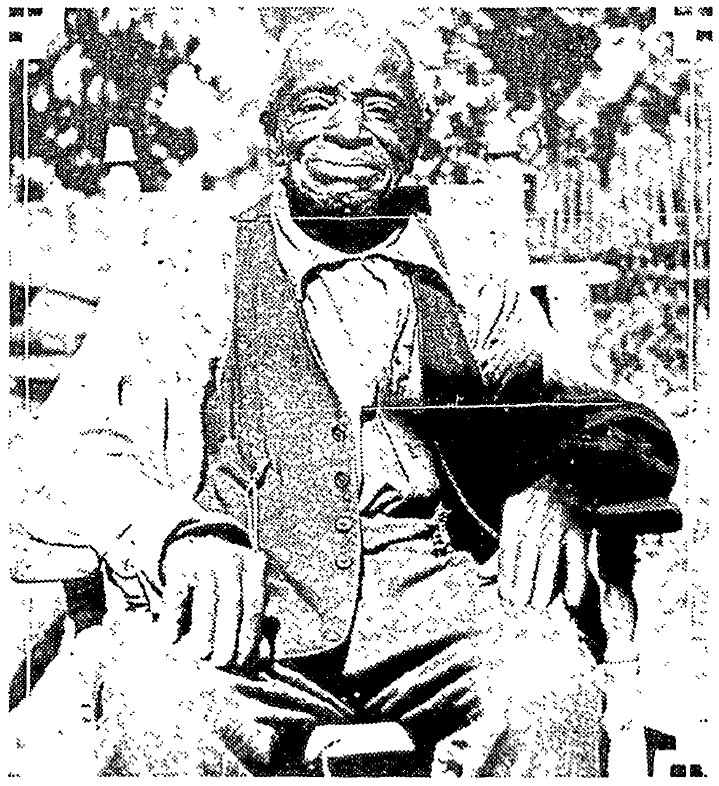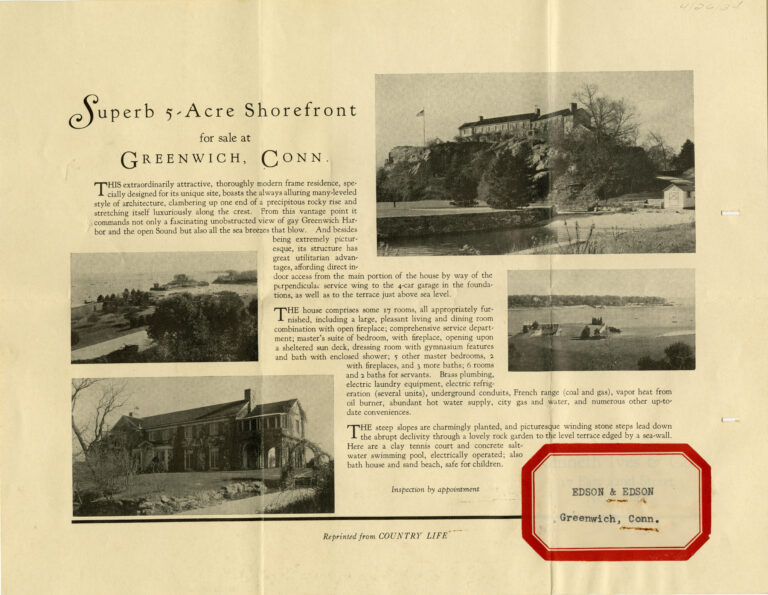Many of us are learning more about vaccines and their development than we would have expected just a short time ago. The news is filled with promising stories of COVID-19 vaccines that offer hope of an eventual return to more normal social interactions. It’s clear that the creation of modern vaccines involves sophisticated science that often involves custom tailoring of genetic material. We are the beneficiaries of extensive research in this field that has laid a solid foundation for tackling the current pandemic.
Looking back a little more than 100 years ago, a decidedly less sophisticated approach to vaccines could be found locally, right in Cos Cob. Mr. William Lawrence operated a smallpox vaccine factory from a barn on his farm. The property was just off the Post Road, between today’s Indian Field and Strickland Roads (see Figure 1).
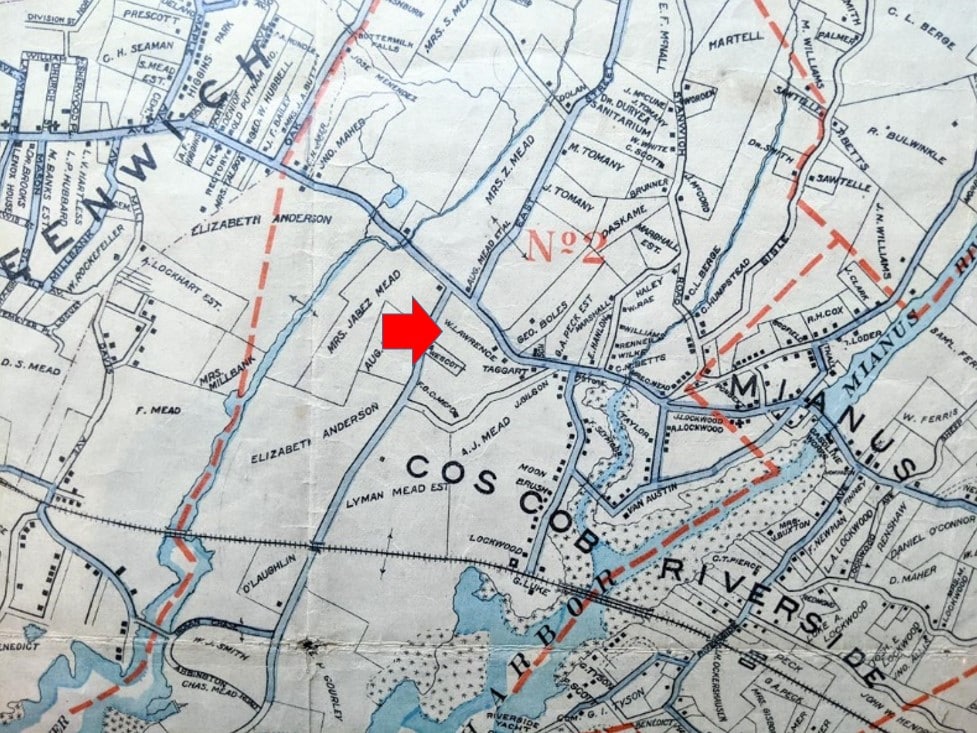
Smallpox was a very serious viral disease that afflicted humanity for hundreds of years. Millions of lives were lost to the illness and many survivors endured great suffering. Some were left blind or with severe, disfiguring scarring.
Populations that had never been exposed to the illness were particularly vulnerable to devastating outbreaks because they did not have any natural immunity. The native population in North America was ravaged by smallpox when it was introduced to the continent by newly arrived European settlers.
For some context, here is an overly-simplified description of smallpox vaccine development. An early form of inoculation called “variolation” involved making a cut in the skin and then inserting “pustular matter” from an infected person into the wound. The idea was that the newly inoculated person would get a milder form of smallpox through this targeted exposure and develop lifelong immunity. Not surprisingly, this method was not without its complications. Up to 10 percent of people who were “variolated” died from smallpox. Others developed a mild infection but readily spread the infection to others, sometimes causing devastating community outbreaks.
In the late 18th century, an improved inoculation method involved infecting a person with the less severe cowpox virus (again, through lacerations on the skin). It was observed that this conferred immunity to smallpox without the risks of smallpox infection. It seems that this version of “vaccine” was produced at the Lawrence’s Cos Cob farm.
An 1882 article in the Greenwich Graphic newspaper provides additional details (see Figure 2).
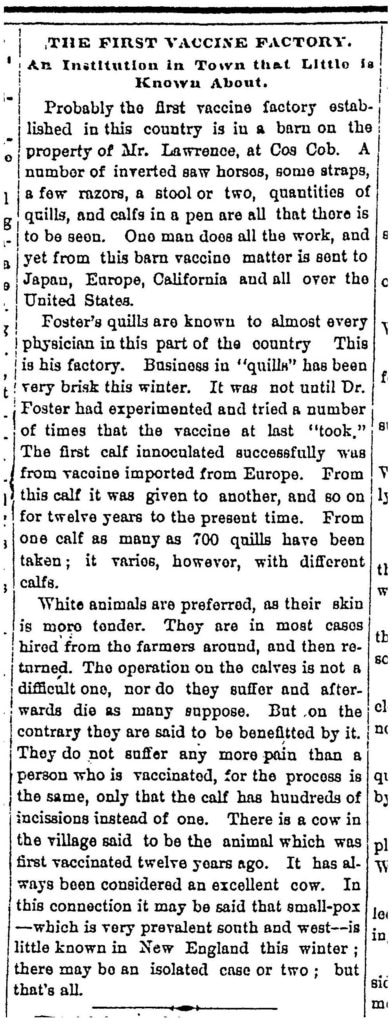
Mr. Lawrence lived a long life, passing away at the age of 92 in 1900. His work producing vaccine was the highlight of his obituary (see Figure 3).

If you are interested in a more detailed and fascinating discussion of the development of the smallpox vaccine, see Edward Jenner and the history of smallpox and vaccination.


